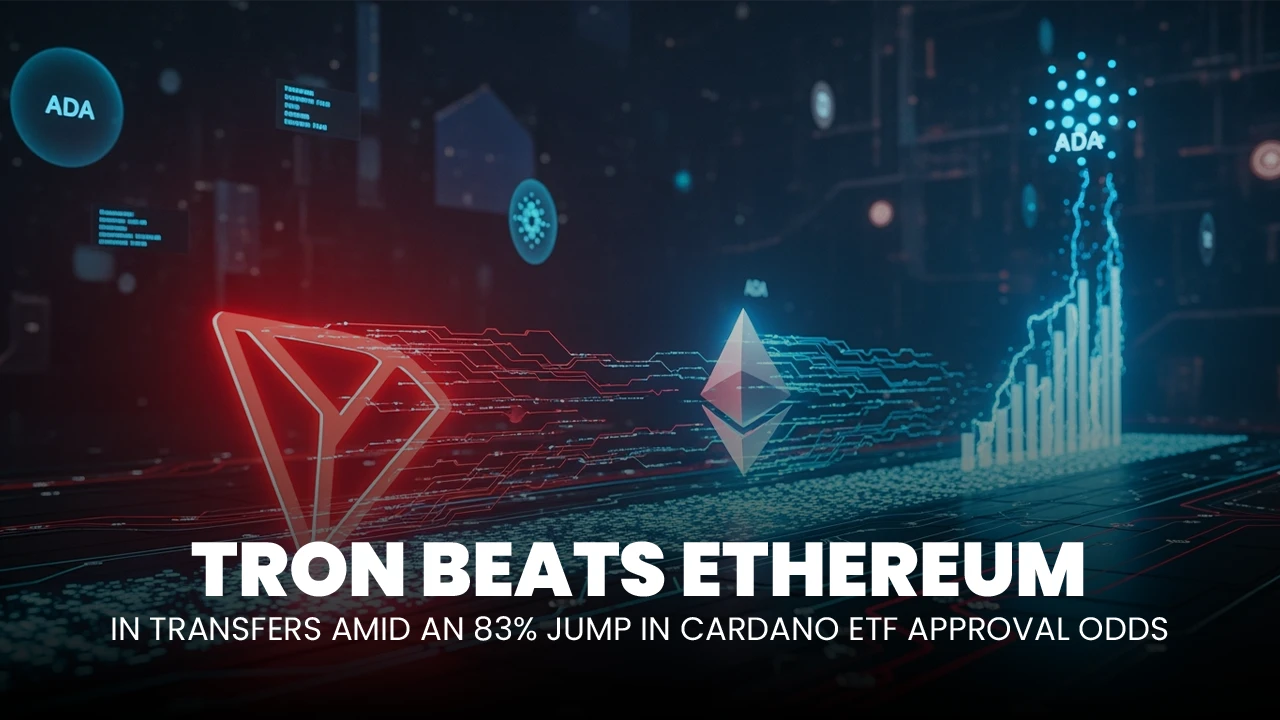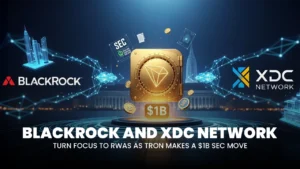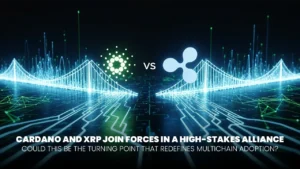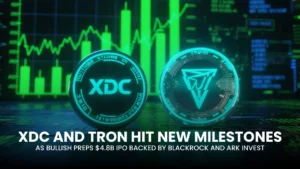TRON Beats Ethereum in Transfers Amid an 83% Jump in Cardano ETF Approval Odds

In a 1-week breakout period in the crypto markets, TRON (TRX) sparked attention by overtaking Ethereum in daily volume of Tether (USDT) transactions. On a single day, 96 million USDT transactions were registered on the TRON network, while Ethereum had only 1.1 million.
This is all possible through TRX’s very efficient infrastructure, on top of a Delegated Proof of Stake (DPoS) mechanism designed for speed, scalability, and inexpensive transaction fees. These have made TRON the undisputed king of the stablecoin scene, especially for those who need fast and affordable transfer services.
ALSO READ: XDC Network Set to Tokenize $1 Billion in RWAs Amid Binance US Trading Launch
The marketplace is reacting correctly. TRX is currently at $0.1399, close to an all-time high. The rally is driven by real network utility and adoption, not speculation. TRON is showing performance, not hype, and is the future of crypto.
Approval Probability of Cardano ETF Reaches 83 Percent
While TRON leads stablecoin activity, Cardano (ADA) is gaining momentum among institutional investors. Prediction website Polymarket presently has the odds of approval of a Cardano ETF until the end of 2024 at 83 percent, reflecting rising optimism among investors.
DPoS-led model of Cardano puts it in a good position regarding institutional adoption. Its focus on scalability, energy efficiency, and long-term sustainability aligns with the requirements of regulators and ETF issuers. With more interest being raised, AInvest analysts have estimated an ADA bullish target of $4.25 in case of approval of the ETF.
Hoskinson: ADA to Outperform Bitcoin in Utility
Charles Hoskinson recently stated that ADA could eventually top Bitcoin, not in capitalization, but in practical use and technical soundness. He noted the Cardano architecture as more amenable to practical implementation and went on to cite Remittix, the remittance-driven token, as a realistic comparison.
ALSO READ: Cardano Gets a Swipe at Apple Pay Amid TRON’s Regulatory Power Play on Nasdaq
The architecture of ADA is designed with high throughput, security, and decentralized governance. These qualities make it more desirable for both retail and institutional clients.
Real-World Use Cases Stimulate Crypto Activity
The weekly developments of TRX and ADA reflect part of a larger trend. Investors and end-users are aligning with protocols that can meet real-world demand. Whether it be through TRX’s volume leadership in the realm of USDT volumes or ADA’s growing ETF promise, performance-driven chains are certainly at the forefront.
Both networks have DPoS architectures that enable fast, cheap, and energy-efficient transactions. Such characteristics are more than technical advances, but the essential requirements for blockchains in anticipation of institutional finance and daily use at scale.
ALSO READ: Steemit Woos Young Africans with Content Monetization Opportunities in 2025
Conclusion
TRX surpassing Ethereum in USDT usage and ADA’s enhanced ETF approval prospects mark an unmistakable development within the cryptocurrency realm. It’s all about scalability, usability, and infrastructure nowadays. With good DPoS platforms behind them, TRON and Cardano are showing that usability in real-world applications is the key to long-term growth.
As institutional demand rises, speed-, sustainability-, and efficiency-optimized chains will lead the next blockchain adoption wave. TRON and Cardano have already laid the foundation.
Frequently Asked Questions (FAQs)
Q: How did TRX surpass Ethereum in USDT activity?
A: TRX processed 96 million USDT transactions per day, versus Ethereum’s 1.1 million. Its high-speed, low-fee DPoS network is designed for high-scale, cost-effective transfers.
Q: How probable is it that an ETF on ADA will be approved?
A: Today, prediction marketplace Polymarket places it at an 83 percent likelihood of approval by year-end 2024.
Q: Why is DPoS important in TRX and Cardano?
A: Delegated Proof of Stake enables fast, scalable, and energy-efficient transaction validation, thereby making the networks more suitable for mass adoption.
Q: How did Charles Hoskinson characterize ADA?
A: He indicated ADA had the potential of overtaking Bitcoin by real-world adoption and technical superiority, rather than by market cap.
Q: Why is investor sentiment bullish on ADA?
A: Better infrastructure, growing ETF prospects, and alignment with institutional forecasts have all contributed to rising bulls on ADA’s future.
Glossary of Key Terms
- TRON (TRX): A high-speed blockchain network with rapid and inexpensive transactions, currently leading in volume of USDT.
- Cardano (ADA): A blockchain platform with energy-efficient emphasis on scalable, sustainable financial applications.
- Ethereum (ETH): The foremost smart contract platform, recently overtaken in daily USDT volumes by TRON.
- USDT (Tether) is a popular stablecoin pegged to the US dollar, widely used for on-chain transfer and liquidity.
- DPoS (Delegated Proof of Stake): A way of consensus through which voted validators validate transactions and facilitate scalability and high efficiency.
- ETF (Exchange-Traded Fund): A registered investment product that provides traditional marketplace access to cryptocurrencies.
- Remittix: A lesser-known remittance-focused token referenced by Hoskinson as part of an in-world comparison of use cases.
- Polymarket: A prediction platform on a decentralized network monitoring odds on matters like ETF approval.
- AInvest: A cryptocurrency research company that provides predictions and future price estimates of virtual currencies such as ADA.




